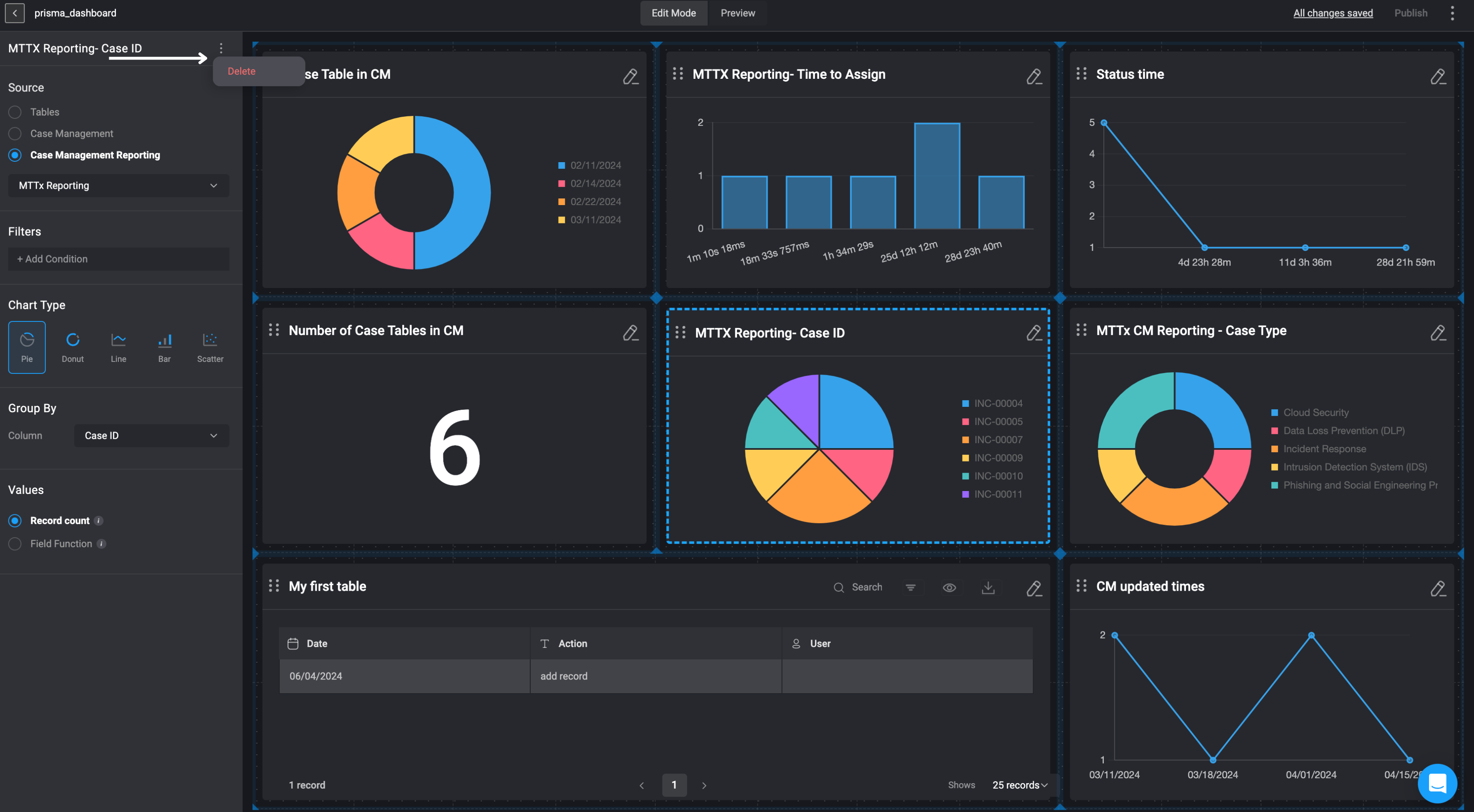Adding Chart Widgets
1
In the Edit Mode tab of the Dashboards Building Interface, click the “add a widget” button.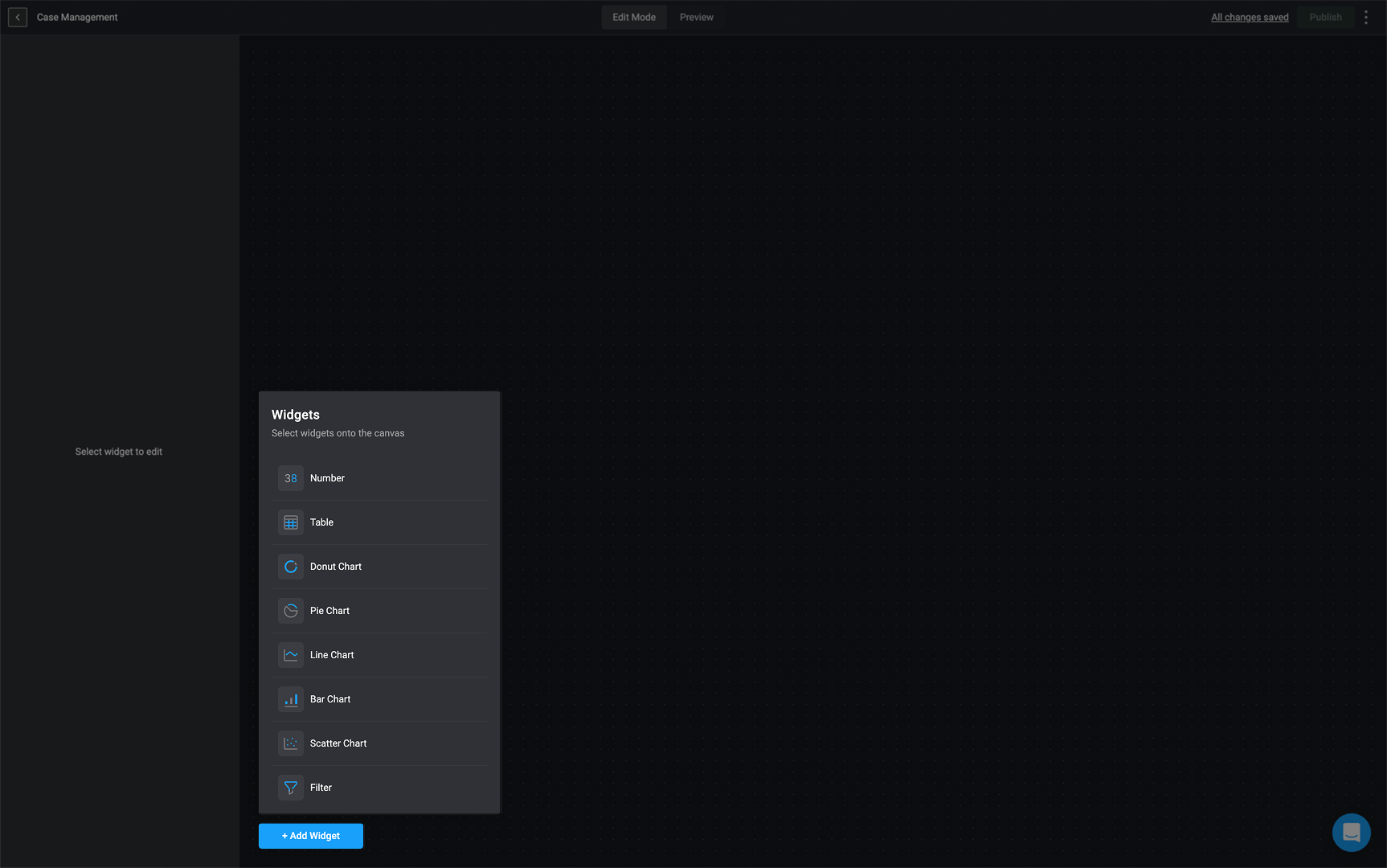

2
Choose a Chart Type
Choose the type of chart you want to utilize. You can choose between a Pie, Donut, Bar, Line or Scatter chart.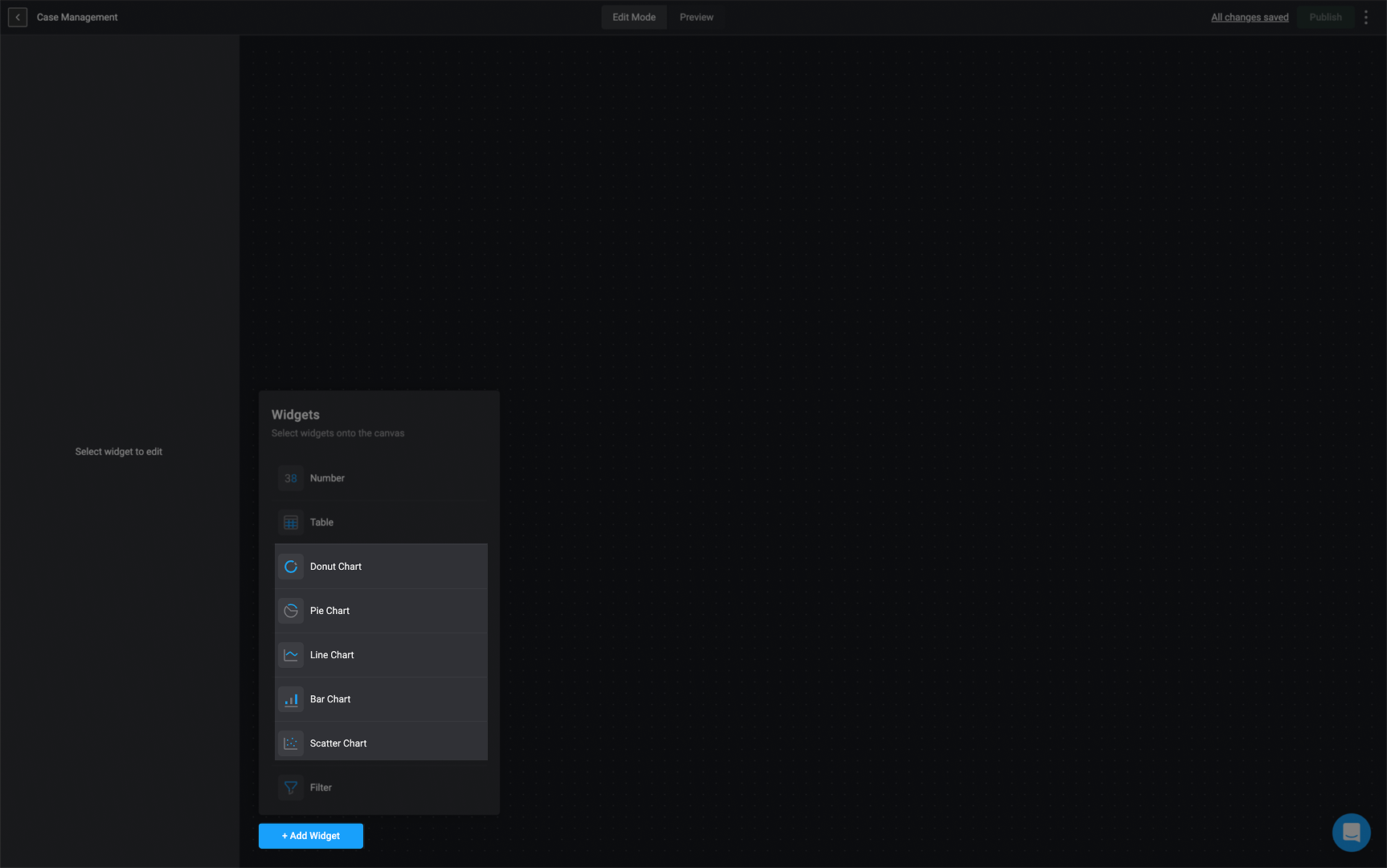

3
Provide a name
In the top left corner , double click on Untitled widget and provide a name for the selected chart widget.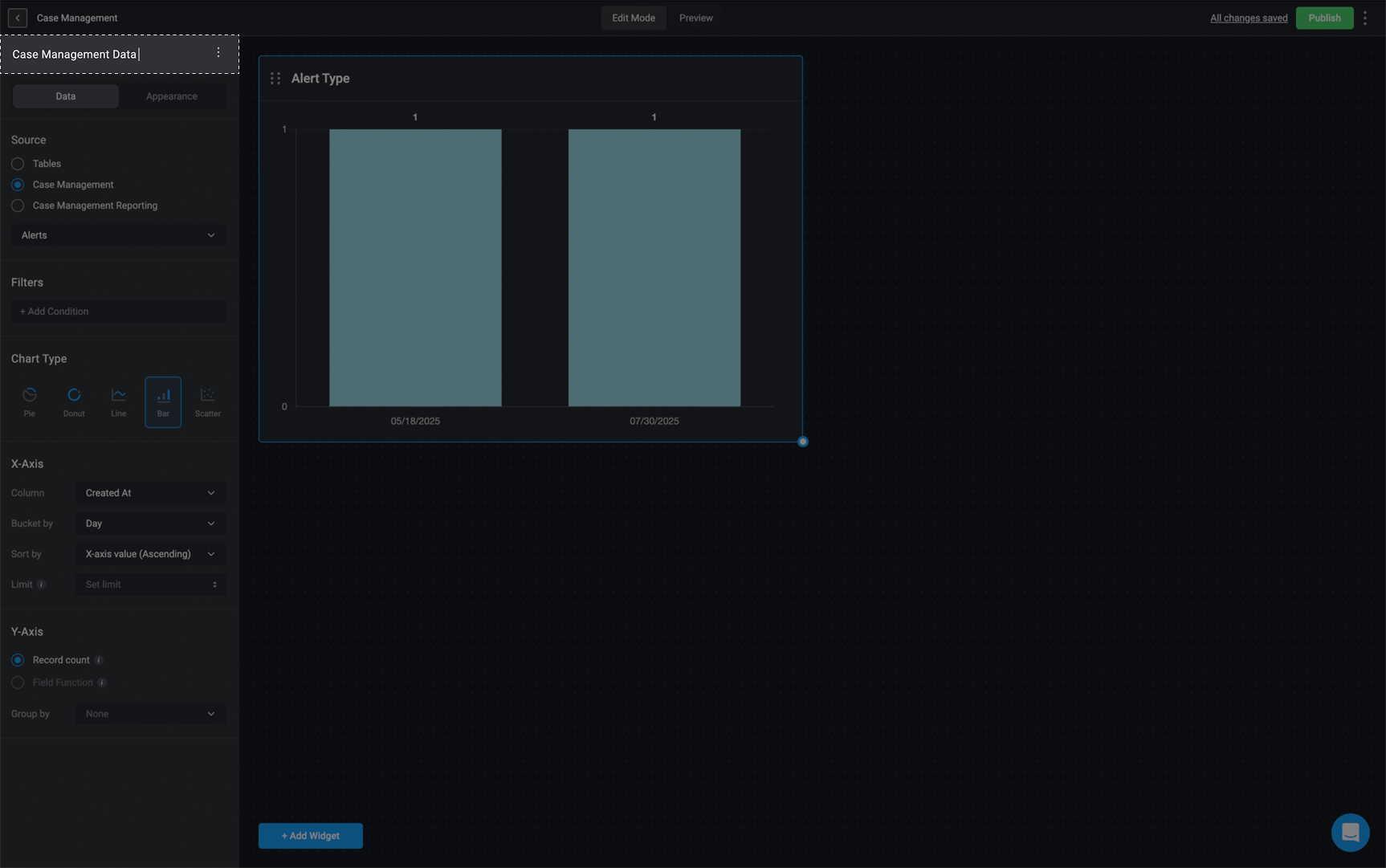

4
Choose Data Source
Choose a data source: Tables, Case Management Tables or Case Management Reportings and proceed by selecting the specific table column from the data source you would like to use.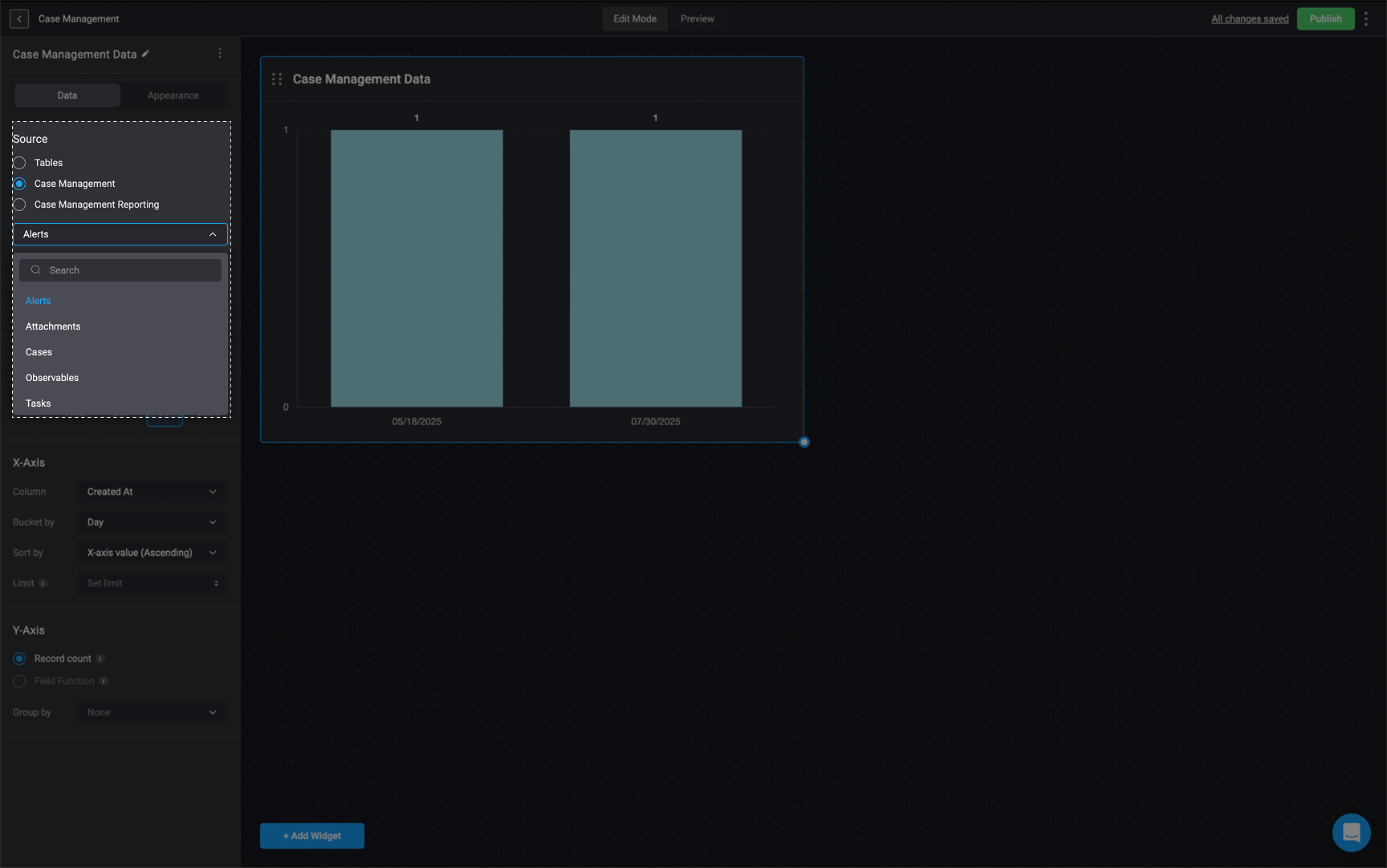

5
Optional-Filter Data
Under the Filters section, using thecondition builder, you can set specific records by condition(s) to filter the underlying data.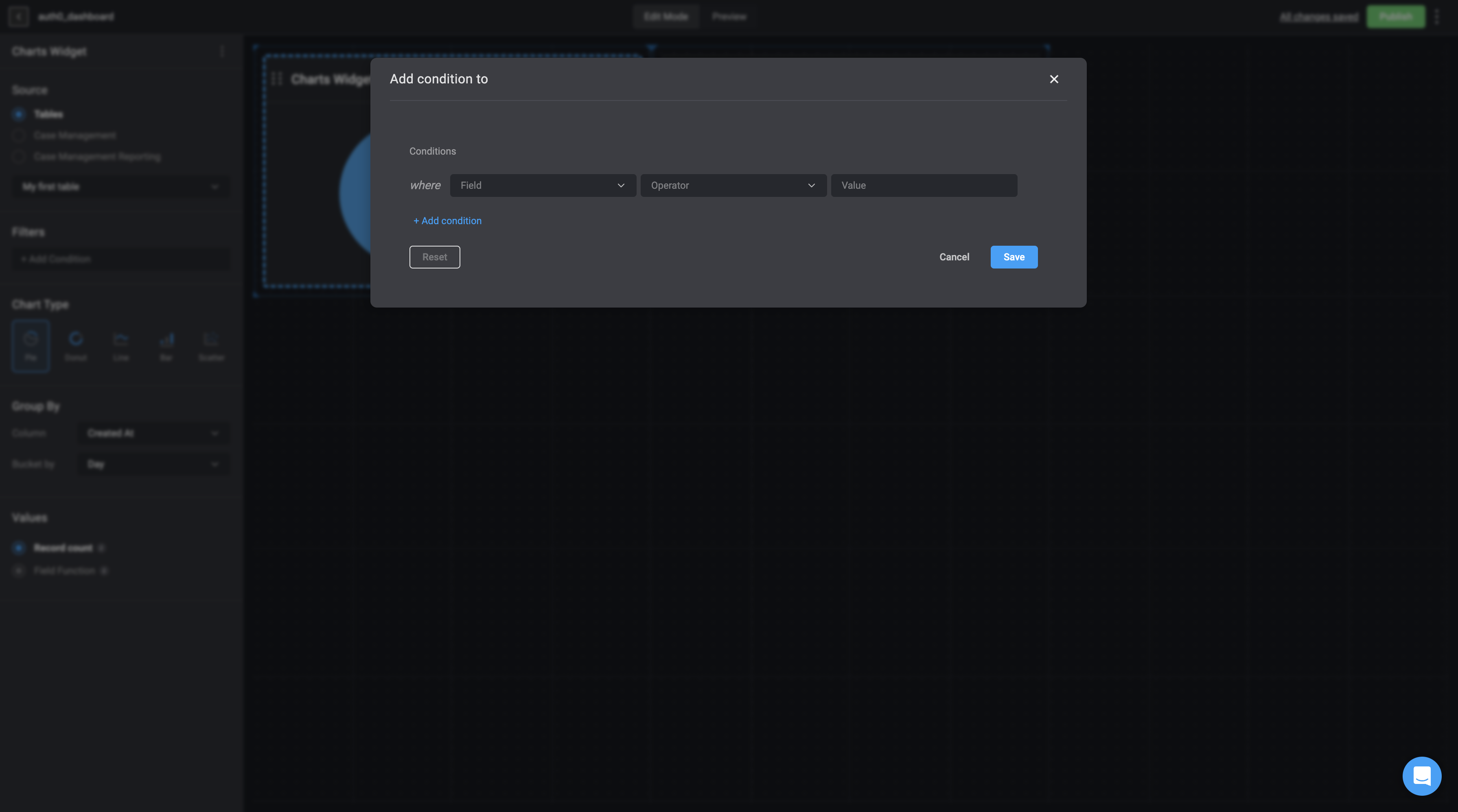

Chart Types and Configuration
- Pie
- Donut
- Bar
- Line
- Scatter
Pie Chart Data Configuration
NoteThe data used to configure the
pie chart will be taken from a particular table from the tables feature or case management feature.As a reminder, chart elements can expose raw data that may be sensitive, and therefore should not be used if you have concerns with viewers being able to see that information.1
Group By
-
Column: Choose the table column you want to group the
pie chartby.-
If the selected column is a time period, you will see the Bucket by option, allowing you to categorize the time period. This will be shown as a legend on the right side of the
pie chart.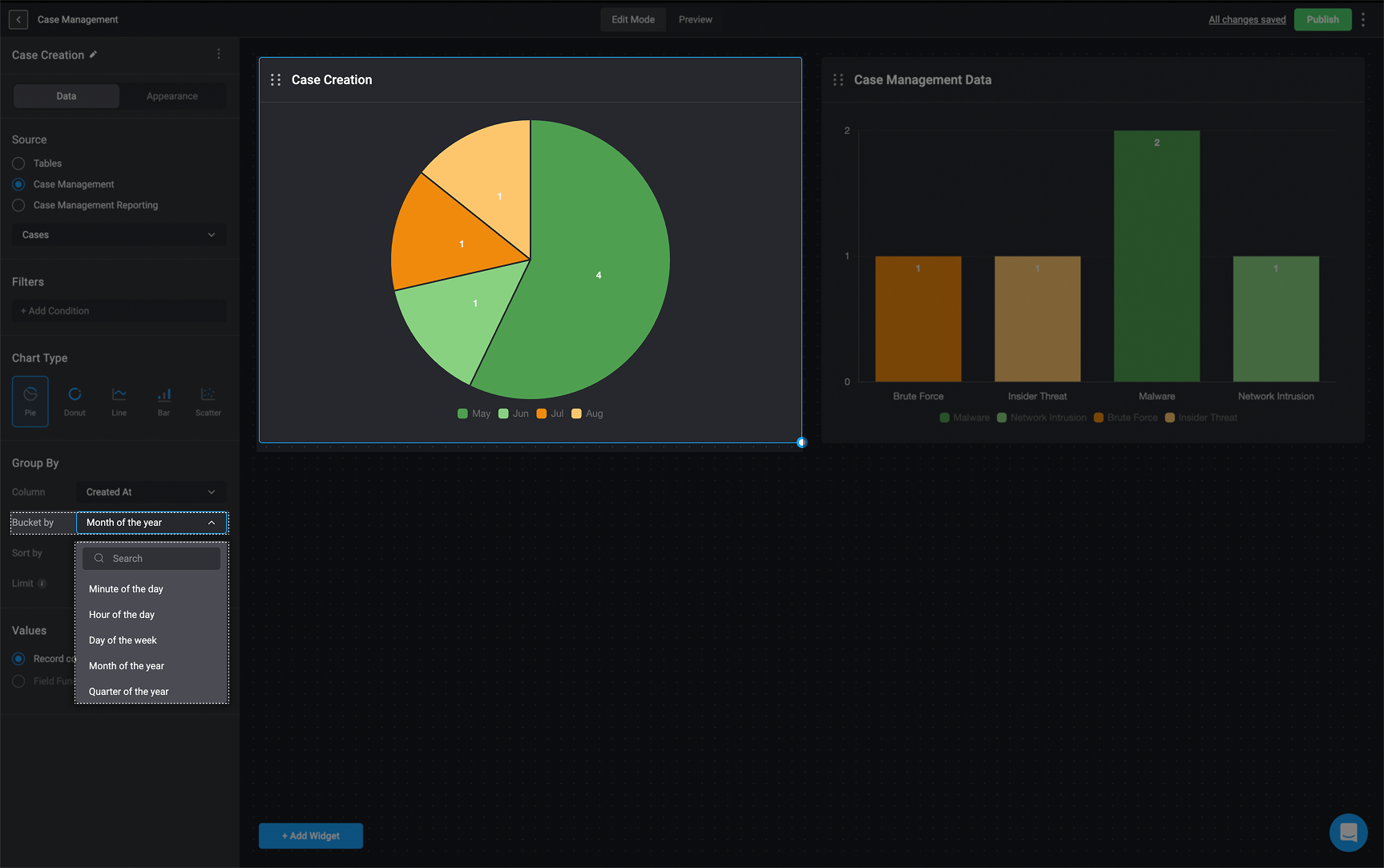
-
If the selected column contains user-related data, the ‘User Count’ option becomes available. This lets you choose how to group and count the data:
- Distinct Count – Counts each user and group separately. If a record is linked to a specific user, that user’s name (or email) will appear in the legend. For example, in a pie chart, each slice represents an individual user or group
- Aggregated View– Groups records by user groups instead of individual entities. The legend will only show group names, and the count will include all records linked to the group, including those assigned to individual users in the group.
Use Case Example: User Count
Scenario:
A team is tracking case management tasks using a pie chart where the “Assigned To” column contains user-related data. In this example:There are a total of 5 Tasks- Talia is assigned 1 task
- John is assigned 1 task.
- Noah is assigned 2 tasks.
- Group-CM Collab (which includes both John and Noah) is assigned 1 case.
When visualizing this data, two different counting methods can be used:
1. Distinct Count
In this view, each task assigned to the users and group are counted separately:- Talia is assigned 1 task
- John: 1 tasks
- Noah: 2 tasks
- Group-CM Collab: 1 task (only counting tasks assigned directly to the group, without including those tasks assigned to its members).
2. Aggregated Viewed
In this view, tasks are counted at the group level, including tasks cases belonging to individuals within the group:- Group- CM Collab appears as on of the groups as a legend item.
- Total tasks counted for Group- CM Collab: 4 (1 task assigned to John + 2 tasks assigned to Noah + 1 task assigned directly to Group- CM Collab).
-
If the selected column is a time period, you will see the Bucket by option, allowing you to categorize the time period. This will be shown as a legend on the right side of the
-
Sort By: Choose the order you want the data sorted by:
- Segment name (ascending)
- Segment name(descending)
- Segment count(ascending)
- Segment count(descending)

-
Limit: Limit the number of bars shown on the chart to hide the lower count values
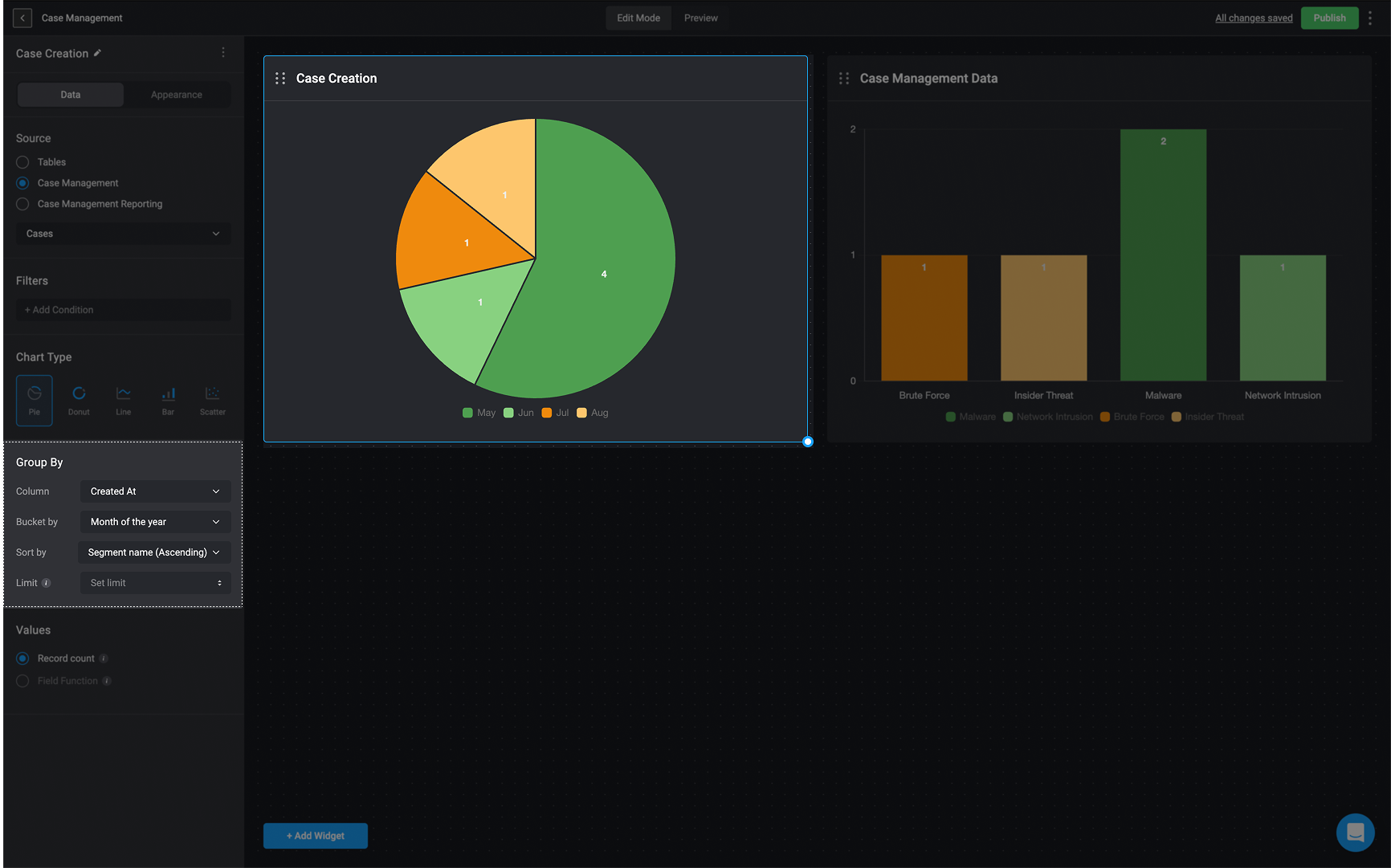
2
Values
-
If you select Record Count:
- The Chart widget will show the total number of records available in the chosen source table.
-
If you select Field Function (You can only add a Field Function if the selected column is a numeric value).
- Choose a column:
Time from Status Open to Status,Time in StatusorTime to Assign - Choose the sum operation that will be used to calculate the selected column values:
Sum,Maximum,Minimum,AverageorMedian.
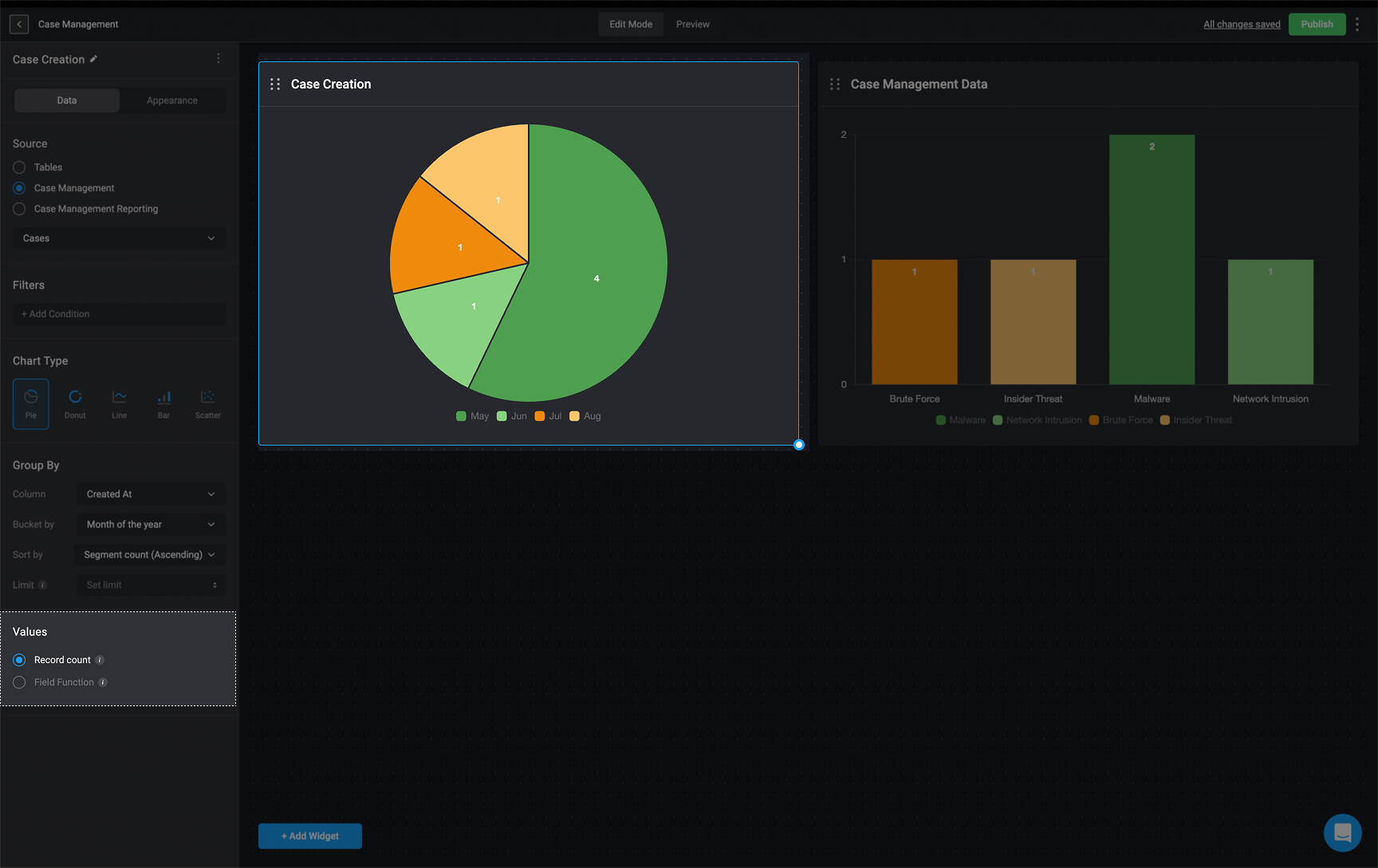
- Choose a column:
Customize Widget Appearance
In the ‘Appearance Tab’, you can customize the appearance of a chart widget by selecting a color palette and customizing the legend, as well as the X and Y axis labels.Widgets that display case severity data will use the default system color palette by default. However, you can customize the color palette to better suit your preferences.
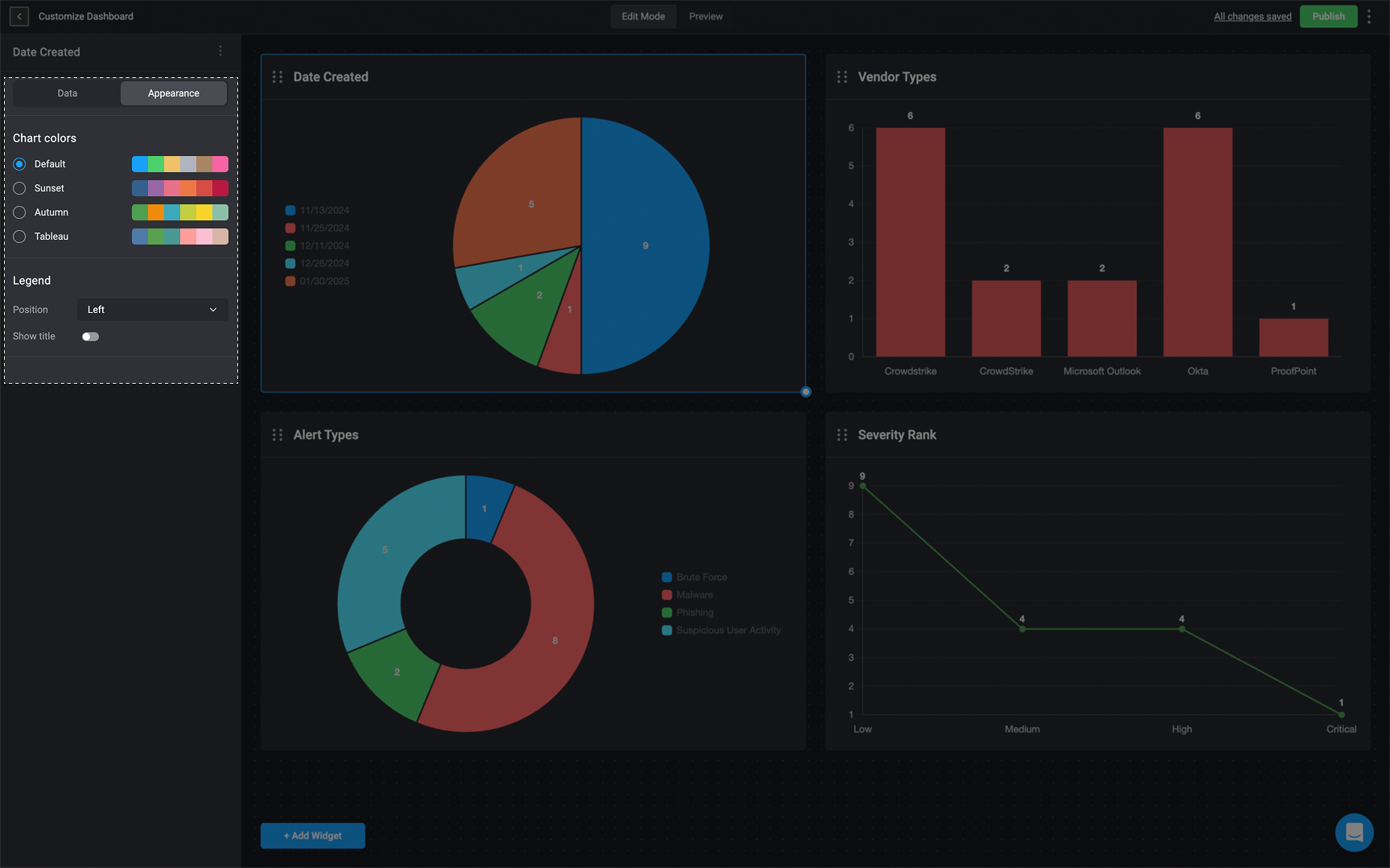
- For the pie chart and donut chart widgets:
- You can position the legend at the top, bottom, left, or right of the chart, or hide it entirely if you don’t want it to be displayed.
- You can also enable a toggle option to display a custom title.

- For the bar chart, line chart, and scatter chart widgets:
- To customize the selected chart, choose a single color from the palette by clicking the colored square next to the “Color” label. Then choose a single color to apply to the chart.
- You can toggle options to display labels for the X and Y axes.
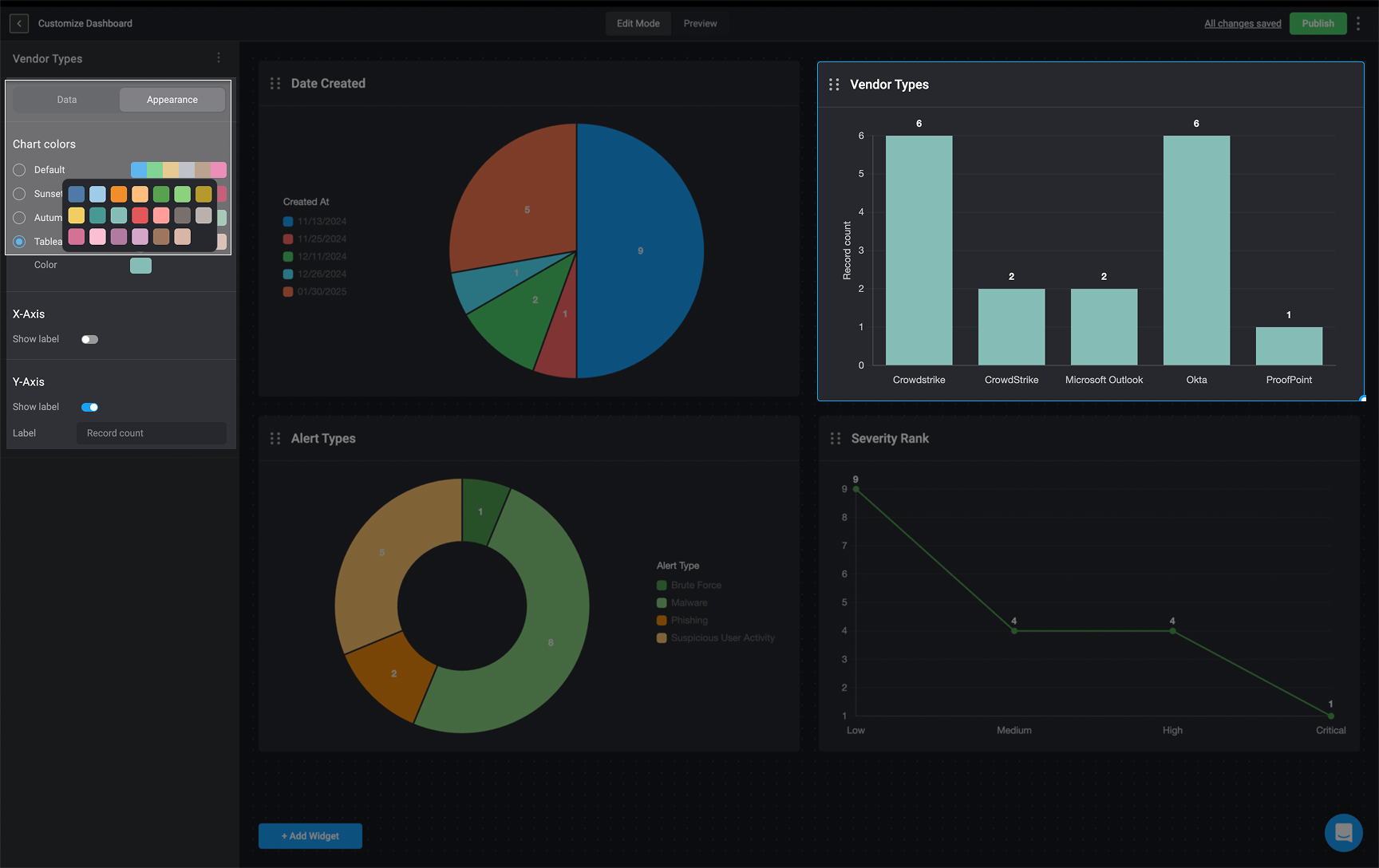
- Any other changes made in the Data tab, will be automatically applied to the widget in real time.
Deleting a Chart Widget
-
In the left-hand sidebar, click the icon in the top-right corner and then select the delete button.
- The Chart Widget will be removed from your Dashboard Building Interface.
